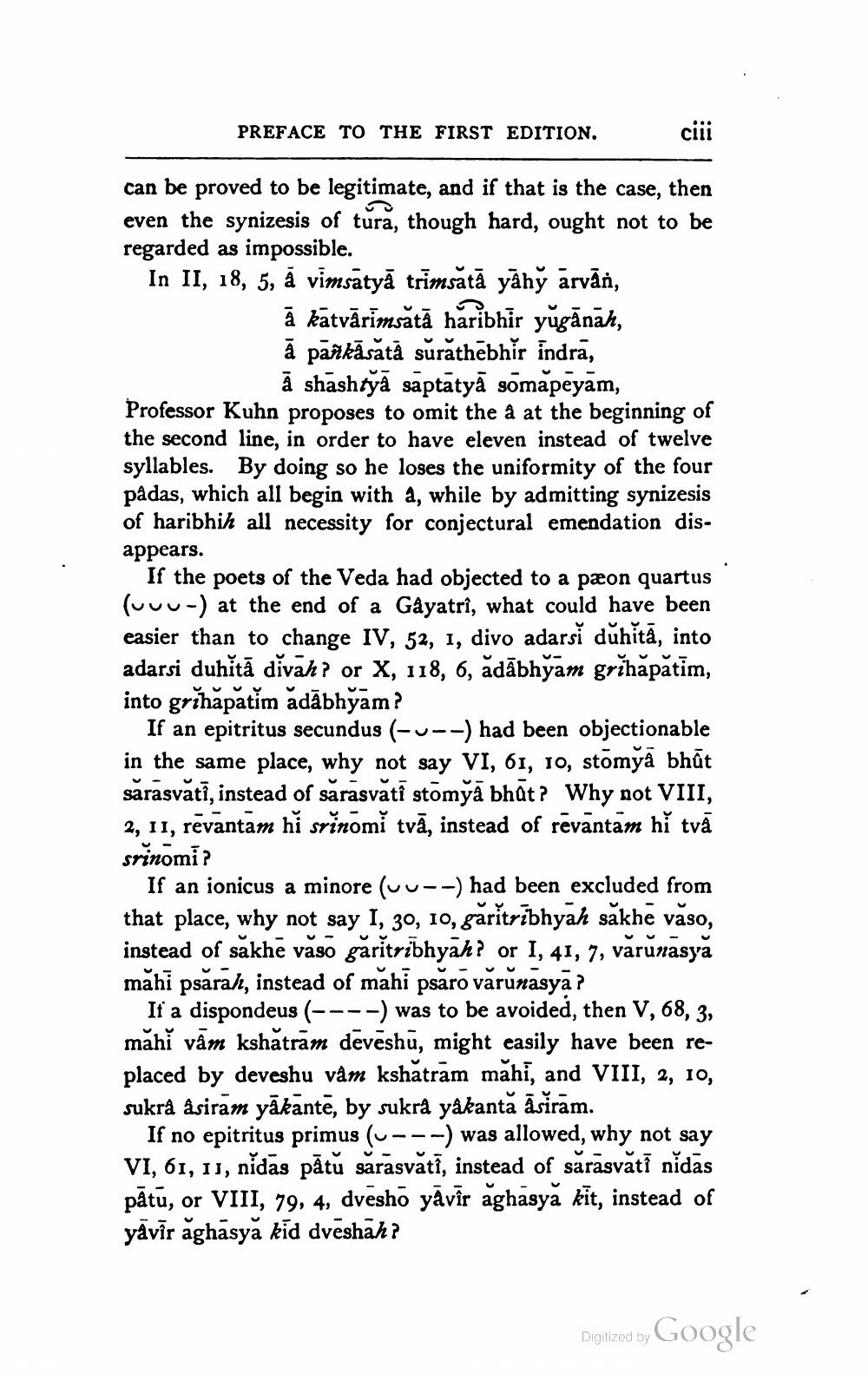________________
ciii
can be proved to be legitimate, and if that is the case, then even the synizesis of tura, though hard, ought not to be regarded as impossible.
In II, 18, 5, ā vimsatyā trimsatā yāâhy arvān,
PREFACE TO THE FIRST EDITION.
ā katvārimsatā haribhir yuganah, ā parkāsata surathebhir indra, a shashiya saptatyā somapeyam,
Professor Kuhn proposes to omit the â at the beginning of the second line, in order to have eleven instead of twelve syllables. By doing so he loses the uniformity of the four pâdas, which all begin with â, while by admitting synizesis of haribhi all necessity for conjectural emendation disappears.
If the poets of the Veda had objected to a pæon quartus (-) at the end of a Gâyatrî, what could have been easier than to change IV, 52, 1, divo adarsi duhĭtā, into adarsi duhĭtā divah? or X, 118, 6, adabhyam grihăpătim, into grihapatim adabhyam?
If an epitritus secundus (---) had been objectionable in the same place, why not say VI, 61, 10, stomyâ bhut sarasvati, instead of sarasvati stomya bhat? Why not VIII, 2, 11, revantam hi srinomi tva, instead of revantam hĩ tvā srinomi?
If an ionicus a minore (~~) had been excluded from that place, why not say I, 30, 10, găritrībhyah sakhe vaso, instead of sakhe vaso garitribhyah? or I, 41, 7, varunasya mahi psarak, instead of mahi psaro varunasya?
If a dispondeus (----) was to be avoided, then V, 68, 3, mahi vām kshatram deveshu, might easily have been replaced by deveshu vâm kshatram mahi, and VIII, 2, 10, sukrâ âsiram yakante, by sukra yâkantă asiram.
If no epitritus primus (~~~~) was allowed, why not say VI, 61, 11, nidas pātu sarasvati, instead of sarasvati nidas pātu, or VIII, 79, 4, dveshō yāvîr aghasya kit, instead of yavir aghasya kid dveshah?
- ^^
3
Digitized by Google




